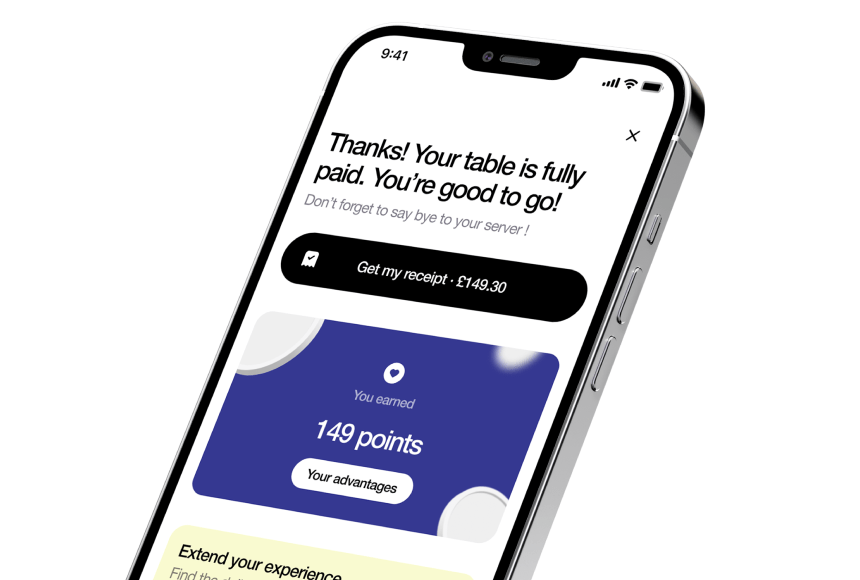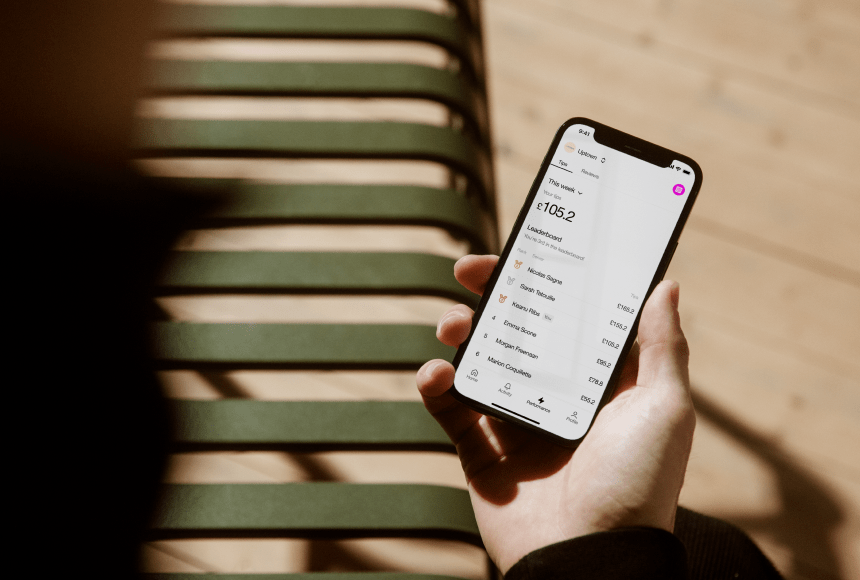
Reviving Lost Diners Through Smart Rewards and Thoughtful Engagement
Why Bringing Back Inactive Customers Is a Game-Changer
Every restaurant owner has felt that pang of disappointment when a once-regular guest stops visiting. Perhaps they moved to another neighbourhood, got busy with work, or simply fell out of their usual routine. The truth is, acquiring a brand-new customer generally costs more than reactivating an old one. That’s why nurturing relationships with past diners can be far more profitable than constantly pursuing fresh faces.
A Harvard Business Review (source) article suggests that boosting customer retention by as little as 5% can increase profits by 25% to 95%. If you’ve already impressed a customer enough for them to visit once, it makes sense to harness that rapport with a well-planned loyalty strategy. Revitalising that connection might be easier than you think — especially when you combine personal outreach with a dynamic, easy-to-use loyalty programme.
Pinpointing Why Customers Become Inactive
Before diving into how to reignite interest, take a moment to reflect on why customers become inactive in the first place. Many factors might be in play:
- Menu Fatigue: If your menu rarely changes, some diners may crave novelty.
- Service Quality Slip: Even small inconsistencies in service can leave a lasting impression.
- Competition: New openings in your area might lure customers away with trendy dishes or special promotions.
- Lack of Personal Touch: Diners might drift toward places where they feel more recognised and valued.
Understanding the root cause can help you craft your re-engagement strategy. If menu fatigue is the culprit, highlight your fresh offerings. If your challenge is competition, focus on unique experiences that only your restaurant can deliver. And if a customer simply forgot your name after months of not dining out, a warm reminder can bring you back to top-of-mind.
Building a Loyalty Programme That Truly Entices
It’s easy to assume any loyalty scheme — say, a simple “10th meal free” card — will work fine. But the real magic lies in crafting a programme that resonates with your unique audience. Think of it as choosing ingredients for a star dish. You need quality, you need balance, and you need that special something that sets it apart.
- Align Rewards with Desires: If your restaurant excels at handcrafted desserts, consider offering a free dessert after a certain number of visits. If you’re known for a cosy brunch, perhaps the perk is a free coffee upgrade or a seasonal pastry.
- Make It Easy to Join: No one wants to fill out a lengthy form or keep track of a flimsy paper card. Simplicity can be the difference between a successful loyalty scheme and a flop. A digital sign-up, maybe linked to a QR code or integrated into your payment process, removes friction.
- Offer Tiered Benefits: Regular, premium, and VIP levels can inspire diners to move up the loyalty ladder. This approach keeps them engaged longer, because there’s always a new perk in sight.
- Get Creative with Expiry Dates: You want a sense of urgency without seeming pushy. If rewards expire too soon, customers may feel pressured. If they never expire, diners may lose the motivation to return quickly. Finding a balanced time limit encourages action.
A well-considered loyalty programme does more than just reward frequent visits. It also delivers subtle nudges that say, “We appreciate you, and we’d love to see you again — on your terms, of course.”
Identifying and Segmenting Inactive Customers
Perhaps the biggest trick with any retention strategy is figuring out who needs some extra love. This is where good data management matters. If you only have a scribbled guestbook, you’ll struggle to pinpoint lapsed diners. But if you maintain a customer database with last-visit information, average spend, and contact details (collected ethically and with their permission), you’re in a far stronger position.
Once you know which diners haven’t visited in, say, three or six months, you can group them into segments based on factors like:
- Spending Habits: High spenders might respond well to exclusive deals or an invitation to a chef’s tasting menu, while budget-oriented diners might prefer a straightforward discount on their next meal.
- Preferred Menu Items: If you know certain customers always order vegetarian dishes, a new plant-based special could spark their curiosity.
- Visit Frequency: Someone who used to dine weekly may need a different approach than someone who popped in once for a special occasion.
Segmenting lets you customise your message, making it more personal and appealing. This is the secret sauce for any re-engagement campaign: don’t blast the same generic message to everyone. Instead, tailor your invitation to remind them why they fell in love with your place in the first place.
Crafting the Perfect Re-Engagement Offer
When it comes to wooing back an inactive customer, a simple “We miss you!” can be surprisingly effective. But sweetening the deal often helps. Think of your re-engagement campaign like a handshake that says, “Hey, we’d love to see you again,” rather than a hard-sell marketing push.
- Personal Touch: Mention their favourite dish if you know it. If your data shows they’re partial to your tiramisu, reference it in your email or text. Show that you remember them as individuals, not just an entry in your system.
- Limited-Time Perk: Offer a free appetiser, a discounted special, or double points on their next visit, valid for two weeks. That sense of exclusivity and urgency can tip the balance.
- Highlight Recent Improvements: If you’ve renovated the patio or added vegan options, mention it. People like to see that you’re evolving — it might be the nudge they need to rediscover you.
A well-structured loyalty programme can turn that small incentive into a bigger relationship. Maybe you offer returning customers enough points for an immediate reward, so they see the benefit straightaway. After that, you keep them engaged by setting up recurring deals or seasonal bonuses for loyalty members.
Using Technology to Streamline the Process
Modern diners expect convenience. This is why integrating technology directly into your loyalty efforts can significantly boost results. A platform like Sunday lets your guests pay via QR code, leave a tip, and drop a quick Google review — all from their phone. But how does that tie in to reactivating dormant diners?
By weaving a loyalty programme into a payment system, you capture valuable data automatically. Every time they dine, the system updates their points and logs their visit date. If months slip by without a return, you can trigger an automated “We miss you” message, possibly with a bonus incentive. It’s gentle, friendly, and based on real-time data.
Sunday’s simplicity means fewer barriers to re-engagement. Your staff won’t have to manage complex redemption steps. And your customer won’t have to rummage through their wallet for a loyalty card. This streamlined flow keeps your brand modern and your diners happy — it’s a win-win.
Bringing Emotional Connection Back
Sometimes, lapsed customers just need to be reminded of how good it feels to enjoy your restaurant’s ambience. That’s why emotional triggers can be so potent in your reactivation plan. A sincere statement — “We remember the time you celebrated your birthday with us. It was a pleasure to host you, and we’d love to welcome you back again!” — resonates on a personal level.
If you have photos or a strong social media presence, you could even tag them in a throwback post (with their permission, of course). Show them how your staff, space, or menu has evolved. Remind them they’re part of your story, not just another transaction. Warmth and authenticity often spark a response, especially when paired with an appealing loyalty incentive.
Timing Your Re-Engagement Messages
Sending a reminder too soon can feel pushy. Send it too late, and you risk the chance they’ve forgotten you entirely or moved on. Finding the sweet spot can be tricky, so experiment to see what works best for your clientele.
- 3–4 Weeks of Inactivity: A light nudge might do, especially if your restaurant usually sees weekly visits from certain regulars.
- 1–2 Months of Inactivity: Consider a mid-range incentive. Perhaps a small discount or a free dessert with their next main meal.
- 3+ Months of Inactivity: Offer something bigger or more personal. Maybe an invitation to a private tasting or a significant loyalty points boost. You want to reignite that spark and overcome any inertia.
Automating these time-based triggers ensures you don’t have to watch the calendar. Instead, your loyalty software or payment-integrated system can handle the scheduling, freeing you up to focus on the daily rhythms of your restaurant.
Training Your Team to Support Reactivation Efforts
An appealing loyalty scheme can get customers in the door, but your staff’s attitude and knowledge will determine whether they feel truly welcomed back. Encourage your servers, greeters, and managers to keep an eye out for returning faces. A simple, “It’s great to see you again! How have you been?” can make a lapsed customer feel right at home.
If you’ve launched specific campaigns to lure back inactive diners, ensure your team knows the details. If a diner shows an email or mention of a special offer, your staff should know how to redeem it quickly, with no fuss. When that process flows smoothly, it adds to the sense of warmth and efficiency.
Taking Advantage of Reviews and Word-of-Mouth
A robust loyalty programme doesn’t just nudge old customers to come back; it can also transform them into unofficial brand ambassadors. After their meal, Sunday’s QR code payment flow can prompt them to leave a Google review. Satisfied diners are often happy to spread the word, which in turn encourages new guests to try your restaurant.
If your reactivated diner raves about how happy they were to return, it creates a ripple effect. Potential customers see that your establishment values relationships, invests in a positive experience, and genuinely cares about each guest. In a crowded market, that personal touch can set you apart more than any discount can.
Maintaining Momentum: Keeping Customers Engaged Long-Term
Reactivating an inactive customer is just the start. Once you’ve reignited their interest, you want to keep the flame burning. Schedule regular communication, but avoid overwhelming them. A well-timed email with new specials or an exclusive loyalty perk every few weeks can maintain that sense of excitement.
You might also consider seasonal or event-based campaigns. If you have a patio reopening in spring, offer a loyalty bonus for dining al fresco. Or celebrate your restaurant’s anniversary by awarding double points for a week. These periodic bursts of novelty give people a good reason to keep you top of mind.
Measuring the Success of Your Reactivation Efforts
As with any restaurant strategy, you’ll want to track results. Here are a few metrics to watch:
- Return Rate: How many of your targeted inactive customers actually come back after receiving your message?
- Redemption Rate: For those who return, do they claim the offered reward or discount? A low redemption might mean your incentive isn’t compelling enough.
- Spending Patterns: Compare the average bill of reactivated diners to their historical spending. Are they spending more, less, or about the same?
- Subsequent Visits: Do they come back again, or was it a one-off? Tracking longer-term loyalty helps you refine your approach.
Adjust your programme based on what the data says. If certain perks flop, replace them. If certain timing windows yield better results, focus your efforts there. A willingness to iterate keeps your loyalty strategy fresh and effective.
Real-Life Scenario: Turning One Visit into Many
Imagine you run a gastropub popular for Sunday roasts. One customer, James, used to come almost every week but hasn’t visited for three months. Through your loyalty system, you see that James racked up points on your pies and craft ales, but he never redeemed any reward. You suspect he found a new hangout or simply got busy.
You set up an automated message: “Hey James, we miss you at The Riverside Bistro! We’ve just launched a new roast special, and we’d love to have you try it. If you pop by in the next two weeks, we’ll add enough points to your loyalty account for a free dessert on the house. Hope to see you soon!”
James sees your note, remembers how much he enjoyed your cosy vibe, and decides to swing by. He tries the new roast, redeems a free sticky toffee pudding, and leaves a happy Google review via your payment system. Suddenly, that relationship is back on track. All it took was a thoughtful reminder and a reward that felt personal.
Looking Ahead: Creating a Culture of Ongoing Connection
A loyalty programme shouldn’t just be a series of one-off promotions. When done right, it becomes an extension of your brand’s hospitality — a gesture of gratitude for each person who chooses to dine with you. By combining that hospitality with targeted campaigns for inactive customers, you show that you’re paying attention and genuinely care about maintaining that bond.
Over time, these little moments of consideration build trust and emotional investment. People remember how you made them feel. They recall that you took the time to notice their absence and welcome them back with open arms. That kind of warmth wins hearts and fosters a sense of belonging far beyond any specific discount or perk.
Your Next Steps to Reactivate and Retain
Re-engaging inactive customers isn’t rocket science, but it does require intention. Start by gathering data and setting up a loyalty framework that’s easy, inviting, and versatile. Segment your audience, tailor your messages, and use technology to automate reminders at just the right moments.
When those diners walk through your door again, make sure your staff knows the plan. Let them greet returning guests with a friendly word and deliver on every promise, from a free appetiser to a bigger loyalty reward. Once you’ve rekindled the relationship, keep the spark alive through regular updates, special events, and seasonal loyalty bonuses.
At the end of the day, your goal is to make every diner feel like part of a family that’s excited to have them back. Because if they sense your genuine care, they’ll be much more likely to choose your restaurant — not just for one meal, but for many meals yet to come.
Find out more today
Drop us your details below and we’ll reach out within the next 24
Take your program to the next level.
See 62% of your customers join your loyalty program by integrating sunday.


